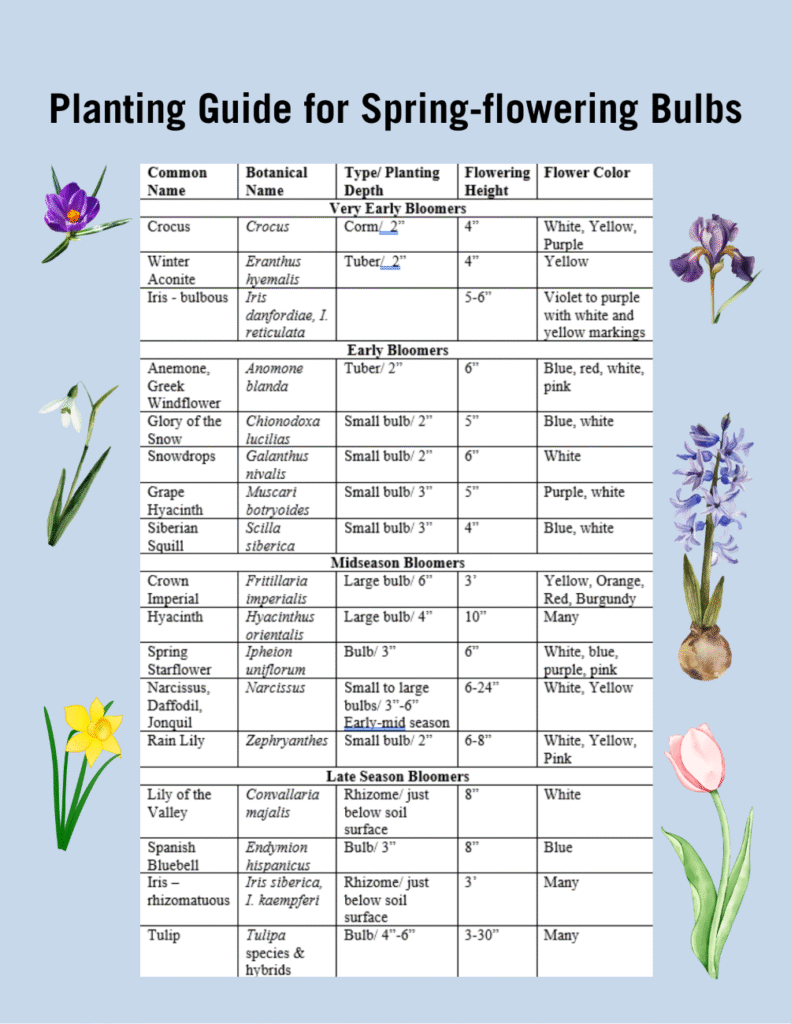
Heather N. Kolich, ANR Agent, UGA Extension Forsyth County
Sometimes, I walk through a store and just shake my head. In July, Halloween merchandise filled the center aisles of local shops. Before Labor Day, Christmas items took over entire store sections. Do we really need to prepare for the next season months in advance?
When it comes to spring-flowering bulbs, we really do need to plan and plant a season or two ahead. These bulbs only flower after they’ve endured 3-4 months of cold temperatures. They must be planted in the cooler days of fall and live in the cold ground through the winter to produce those charming spring blooms.
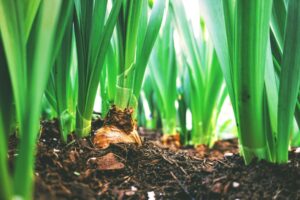
Flowering returns
Bulbs are a good garden investment. Hardy bulbs are perennial, so they grow and flower year after year. Once they’re well-established, they’ll produce little bulbils that grow into new plants. The initial planting of 5-6 bulbs increases by a few bulbs each year.
The generic term “bulb” includes other underground structures such as corms, rhizomes, and tubers. Because different bulb species flower at different times, one garden bed can showcase a succession of different flower colors, forms, and heights during the season.
Site selection
Most bulbs need full sun with a bit of shade at mid-day. Early spring bloomers increase our planting site options to include areas that become shady later in the season. Crocus, snowdrops, and grape hyacinth get plenty of sun and add color to wooded areas before deciduous trees leaf out. Plant mid- and late-spring blooming bulbs where they’ll receive full-sun. Use them to draw attention to entryways, color beds, and other focal spots.
Bulbs tolerate a range of soil conditions, but planting them in an area with good drainage is essential. Bulbs can rot in soil that stays wet. To improve clay soil, work compost several inches deep into the planting area before adding bulbs.
Designing a layered blub garden
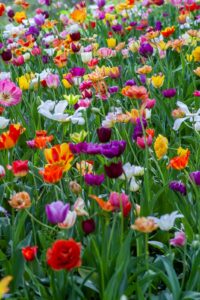
Large bulbs, like tulips and daffodils, are planted deeper (4-6 inches) than small bulbs or corms, like anemone and crocus (2 inches). This means we can layer bulbs in the planting bed and get several weeks of changing colors and blooms in the same space without having to replant.
To create a layered bulb garden, select a variety of small and large bulbs; early, mid, and late season bloomers; and tall and short growers. For garden design, consider which colors, flower forms, and heights will bloom together (see the chart below). Dig the planting area down to 6-inches, or the planting depth for the deepest bulbs. Place the deepest-planted bulbs in the desired arrangement, keeping root ends pointed down. Arrange shorter bloomers forward of taller bloomers so that all flowers will be visible. Cover these bulbs with 1-2 inches of soil and arrange the mid-depth bulbs on top, then cover them with 1-2 inches of soil and place the shallow layer bulbs. Add the final layer of soil and place rhizomes (iris, lily of the valley) just below the soil surface.
While some bulbs will naturalize or spread over time, others, including tulips and hyacinths (Hyacinthus orientalis) decline and may fail to bloom after a year or two. Fall is the time to dig up crowded bulbs and divide them to share or replant elsewhere.
Forcing bulbs
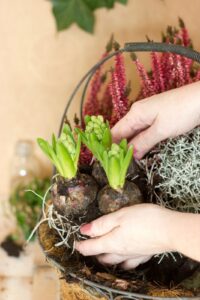
If you can’t wait until spring, some spring-flowering bulbs can be forced to bloom indoors outside of their natural season. Storing the bulbs in the refrigerator for several weeks simulates winter cold. Refrigerate bulbs in a ventilated mesh or paper bag. Some flowering bulbs are toxic, so be sure to clearly label the bag as non-edible.
After chilling bulbs at 34-50 degrees Fahrenheit for 12-16 weeks, remove them from the refrigerator and plant them in a pot at the same depth they would be planted outdoors. Place the planted pots in a warm environment with bright lighting. Plants should bud within 3-4 weeks.
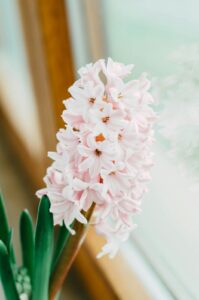
Forsyth County Extension is hosting an online plant sale for spring-flowering bulbs. Selections this year include some fabulous crocus varieties, stunning tulips, and unusual daffodils.Order online at https://tinyurl.com/4pbkd8r8. Proceeds from purchases will support Forsyth County Extension education and outreach programs.